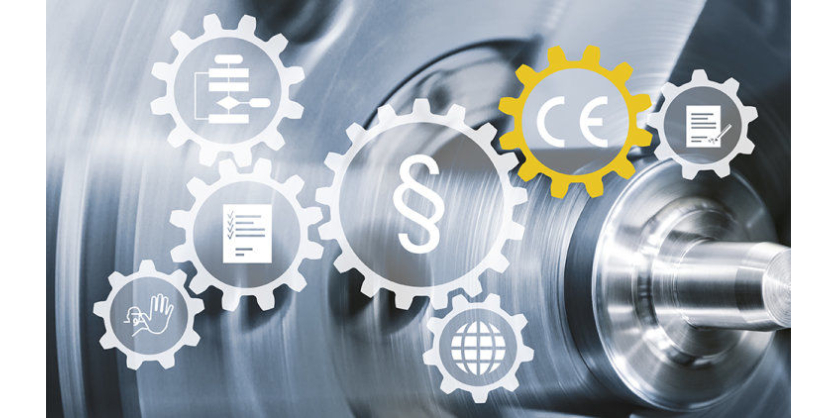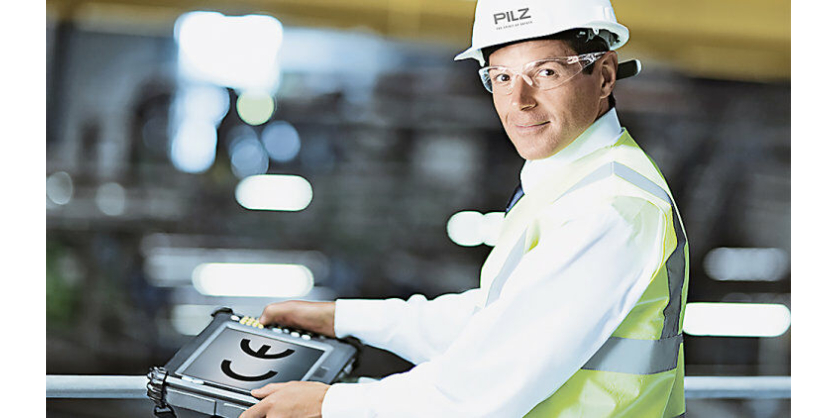Machinery Directive (MD) / Machinery Regulation (MR)
July 10, 2023

The Machinery Directive is one of the most important pieces of legislation for harmonizing the essential safety requirements for machinery within the European Union. It describes standardized health and safety requirements for interaction between human and machine. The Directive promotes the free movement of machinery within the single market and guarantees a high level of protection for EU workers and citizens.
The EU Commission has further developed the Machinery Directive to become the Machinery Regulation (MR), in order to improve safety levels further, take account of security aspects and stay abreast of new technological developments.
The EU Machinery Regulation was published in the Official Journal of the European Union in 2023. However, its application does not become mandatory until after a transition period.
Official title of the Machinery Directive: Directive 2006/42/EC of the European Parliament and of the Council of 17 May 2006 on machinery, and amending Directive 95/16/EC (recast). It has applied since 29.12.2009. Irrespective of the place and date of manufacture, all machinery used in the European Economic Area for the first time from 01.01.1995 is subject to the EU Machinery Directive and as such must be CE certified.
Official title of the Machinery Regulation: Regulation (EU) 2023/1230 of the European Parliament and of the Council on machinery products.
Machinery Directive becomes Machinery Regulation
With publication in the Official Journal of the European Union in 2023, it is now binding that the new EU Machinery Regulation will replace the Machinery Directive as the most important legal provision for machinery safety. New approaches and issues, such as digitisation for example, required ongoing development of the Machinery Directive. After a transition period, the new Machinery Regulation will apply to all companies in the European Economic Area that design, build and sell machinery. Machines that are imported into the area of European jurisdiction also have to meet the requirements.

The EU Machinery Regulation will come into force in all EU member states 20 days after it is published in the Official Journal. As a machine manufacturer you then have 42 months to comply with the new requirements for plant and machinery. Thus the MR will become mandatory in 2027.
Changes in the new EU Machinery Regulation
The Machinery Regulation gives machine manufacturers more precise specifications for how to handle substantial modifications on a machine, as well as machines subject to inspection. What’s more, it also takes into account the growing importance of digitisation and Industrial Security: It describes requirements for the cybersecurity of products as well as digital instructions. The MR covers machinery, as before, and now also “related products”.
- Machines subject to inspection: The list of machines subject to inspection, which was previously in Annex IV of the Machinery Directive 2006/42/EC, has “moved” to Annex I. In Section A it contains a list of high risk machines, for which mandatory inspection and certification through a third party is required. In future, six machine categories will be subject to inspection; application of a harmonised standard does not remove the inspection obligation. This is due to the current developments in artificial intelligence. For the six listed product groups, machine manufacturers can no longer self-declare compliance in conjunction with a harmonised standard, as previously. Instead, a named accreditation body must be involved.
- Substantial modification: The regulation has been extended to include the definition of a substantial modification of machinery and the legal consequences of such a modification. A conformity assessment procedure is required for machinery safety if a machine undergoes major modifications or when changes are made that affect the machine’s compliance with the statutory provisions for CE marking. If a substantial modification has taken place, the user becomes the manufacturer – with all the obligations that entails.
- Safety components: The definition of safety components now includes not only physical, digital and/or mixed-type components, but also software.
- The emergence of new digital technologies such as artificial intelligence, the Internet of Things and robotics present new challenges for product safety. The regulation covers the safety risks arising from new digital technologies.
- In a new section entitled “Protection against corruption”, the Machinery Regulation now also establishes requirements for the cybersecurity of machinery. Cybersecurity threats must not be allowed to compromise the machine’s safety functions. Manufacturers will need to review their existing safety concepts in this regard!
- Digital instructions: Manufacturers shall be allowed to supply instructions in digital form. Should the customer request it, the manufacturer must supply the instructions in paper format. The EU declaration of conformity may be provided in digital form, partly completed machinery may be delivered with digital assembly instructions and with a digital declaration of incorporation.
Harmonised standards
It is still unclear how the process will run with the existing harmonized standards under the Machinery Directive. As it currently stands, these will need to be re-listed. With over 750 directly listed standards alone, that means a significant effort over several years. With a defined transition period of 42 months, the standards committees now have a lot of work ahead of them. It will be interesting to see whether the relevant standards will be available as harmonized standards by the time the EU Machinery Regulation comes into force – presumably in 2027. Pilz will keep an eye on the ball for you!
More Information
The New Machinery Regulation EU Website
Related Story
Pilz Digital Annual Press Conference 2023 – Safety, Security and Automation
2023 will be another atypical year for the company, but one that Pilz is braced to welcome with a cautious, yet optimistic “Yes!”. Pilz is a supplier of safe automation solutions, and the company is expanding its offer in the field of Industrial Security. They will keep on providing support in the form of services and training. Since the company’s foundation in 1948, Pilz has continuously transformed itself, guided by their corporate values and the joy of innovation. This year, Pilz will celebrate their 75th anniversary, a milestone they embarked on with steady footing, despite facing a slew of challenges in the previous last few years.



